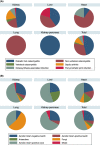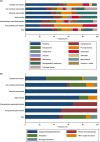Epidemiology and outcomes of bone and joint infections in solid organ transplant recipients
- PMID: 36031963
- PMCID: PMC10087422
- DOI: 10.1111/ajt.17184
Epidemiology and outcomes of bone and joint infections in solid organ transplant recipients
Abstract
Bone and joint infection (BJI) epidemiology and outcomes in solid organ transplant recipients (SOTr) remain largely unknown. We aim to describe BJI in a multi-center cohort of SOTr (Swiss Transplant Cohort Study). All consecutive SOTr with BJI (01.05.2008-31.12.2019) were included. A nested case-control study to identify risk factors for BJI was performed. Among 4482 patients, 61 SOTr with 82 BJI were included, at an incidence of 1.4% (95% CI 1.1-1.7), higher in heart and kidney-pancreas SOTr (Gray's test p < .01). Although BJI were predominately late events (median of 18.5 months post-SOT), most infections occurred during the first year post-transplant in thoracic SOTr. Diabetic foot osteomyelitis was the most frequent infection (38/82, 46.3%), followed by non-vertebral osteomyelitis (26/82, 31.7%). Pathogens included Gram-positive cocci (70/131, 53.4%), Gram-negative bacilli (34/131, 26.0%), and fungi (9/131, 6.9%). BJI predictors included male gender (OR 2.94, 95% CI 1.26-6.89) and diabetes (OR 2.97, 95% CI 1.34-6.56). Treatment failure was observed in 25.9% (21/81) patients and 1-year mortality post-BJI diagnosis was 14.8% (9/61). BJI remain a rare event in SOTr, associated with subtle clinical presentations, high morbidity and relapses, requiring additional studies in the future.
Keywords: BJI; bone and joint infection; epidemiology; solid organ transplant recipients.
© 2022 The Authors. American Journal of Transplantation published by Wiley Periodicals LLC on behalf of The American Society of Transplantation and the American Society of Transplant Surgeons.
Figures



References
-
- Hirschmann M, Schaerer I, Friederich NF. Auswirkungen des demographischen Wandels auf die Hüft‐ und Knie‐Endoprothetik in einem Kantonsspital. Schweiz Med Forum. 2009;9(48):869‐871. doi:10.4414/smf.2009.07001 - DOI
Publication types
MeSH terms
LinkOut - more resources
Full Text Sources
Medical

